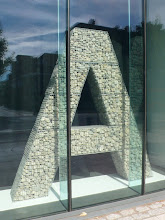As one walks along the Royal Mile, the entrances of the alleyways beckon the visitor in, giving glimpses of small courtyards or steps that suddenly transport one, as if by a magical shortcut, to a lower part of town.
Exploring these alleyways one constantly moves from dark to light and back again—from being enclosed by walls and a low roof, to standing under the open sky within a courtyard. The history seems tangible within the walls themselves, but is also overtly recorded in a series of plaques relating to names such as Fleshmarket Close or Old Stamp Office Close and residents of note.
I wanted to try and recreate this physical sense of exploring these spaces within the pages of a book. I noticed an antiquarian map seller on the Royal Mile, towards Holyrood, who sold facsimile versions of 1765 map engraving of the Old Town, where the negative space created by the closes and wynds was clearly detailed. I began to think about using the traditional form of the map in such a way as to place the reader 'within' the space rather than above it. Hopefully the photographs can give you a reasonably decent idea of how it works. If you click on the each photo you will get an enlarged image but then you will need to hit the back button on your browser to get back to the rest of this post.

I wanted to emphasise the disorienting nature of the Old Town and the sudden changes from light to dark, and back again. To this end, I scanned the map and began to enlarge sections of it, which I printed onto A4 paper. As I enlarged the images, they retained a sense of 'mapness', but also took on a more clearly geometric sense of negative and positive space.

I began to cut away small, self-contained sections within the pages I was printing. By folding the page in half, with the image on the outside, and binding the edges, it creates a 'hidden' space and it occurred to me I could reveal some of the events, buildings and characters who once brought to life these overcrowded streets within this space of the book.

Fragments of text are therefore visible through the cut away areas, and with the edges of the page perforated, the reader can reveal the full text if they so wish.



The scale of the map increases and decreases as one moves through the book, attempting to get a sense of moving from the main streets into the small closes.

Occasionally the pages are reversed and then blank, to imply the change from dark to bright sunlight as one moves towards and into the open courtyards.



The book is about looking, exploring and physically interacting—which is what Edinburgh engendered in me.
One thing that did also occur to me is that I think this book relates to the small mapbooks I made much earlier in the process of the PhD. Maybe its cheating to rework maps into other things, as the quality of 'mapness' is inevitably going to carry through into the reworking, but I think you can't go wrong—it'll always look lush because of that 'mapness'!
As with the other Edinburgh book, this 'mapbook' has developed from an immediate sense of place and a very basic physical interaction with the streets. I also think it couldn't have developed in the way it has without a physical interaction with the materials—paper and scalpel—used to make it. You can't really theorise about cutting random holes in paper (having said that, someone somewhere is probably doing a PhD on the very subject!) and making the text fit accordingly.
What I also like about these two books is not only their immediacy, but also their low-tech production values. They are both printed on 80gsm ivory coloured paper from Staples using a £60 black and white laser printer. The colour of the paper echoes much of the brick I encountered in Edinburgh and the thinness of the paper leads to some show through, which I think adds to the sense that is more to reveal behind each page. Rubbings were done onto ordinary paper with a wax crayon, the map was scanned on a £70 scanner. Binding has been done by hand after consulting instructions from the web. There is nothing here that is prohibitively expensive or difficult to get hold of. If I am to promote the idea of a geo/graphic design process, it should be one that is achievable by geographers in their academic offices, not just artists or designers in a high-tech studio.


2 comments:
A great idea and nicely executed.
Thanks for sharing such valuable information.. I am very lucky to get this tips from you. Graphic Design Edinburgh
Post a Comment